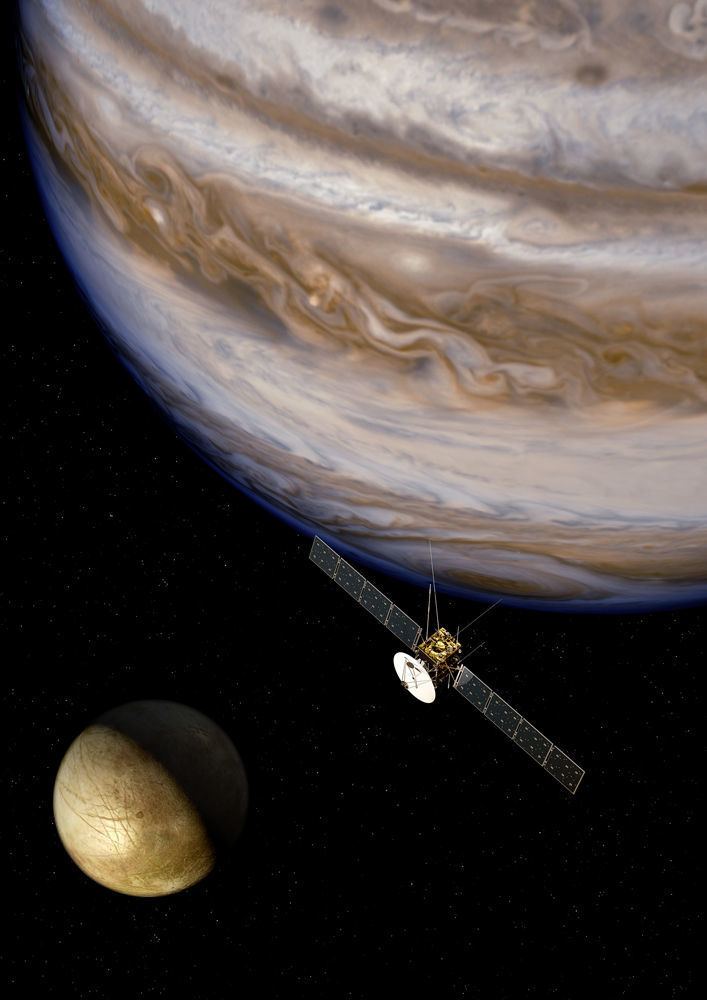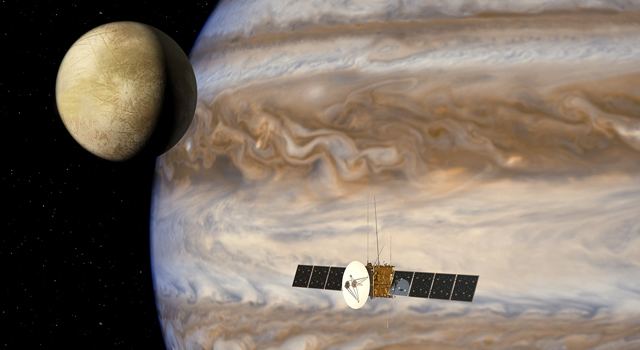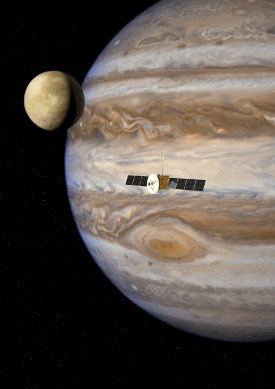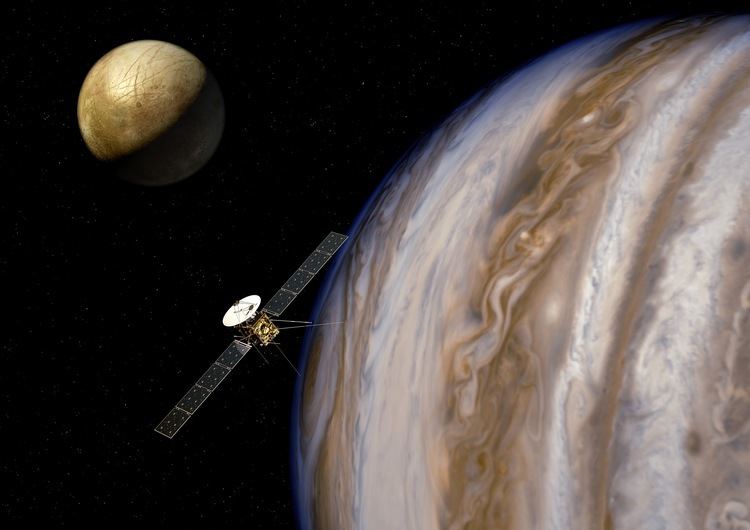Mission type Planetary science Orbital insertion 2033 | Orbital insertion 2030 Launch date 2022 Manufacturer Airbus Defence and Space | |
 | ||
Mission duration 7.6 years cruise;3.5 years in the Jovian system. Power Solar array of about 100 m Similar Galileo, Solar Orbiter, PLATO, EarthCARE, Advanced Telescope for High E | ||
The JUpiter ICy moons Explorer (JUICE) is an interplanetary spacecraft in development by the European Space Agency (ESA) with Airbus Defence and Space as the main contractor. The mission is being developed to visit the Jovian system focused on studying three of Jupiter's Galilean moons: Ganymede, Callisto, and Europa (excluding the more volcanically active Io) all of which are thought to have significant bodies of liquid water beneath their surfaces, making them potentially habitable environments. The spacecraft is set for launch in 2022 and would reach Jupiter in 2030. By 2033 the spacecraft should enter orbit around Ganymede for its close up science mission and becoming the first spacecraft to orbit a moon other than the moon of earth. The selection of this mission for the L1 launch slot of ESA's Cosmic Vision science programme was announced on 2 May 2012.
Contents
- History
- Plan
- Science objectives
- Mission conditions and design
- Ganymede Lander
- Scientific payload
- References

History

The mission started as a reformulation of the Jupiter Ganymede Orbiter proposal, which was to be ESA's component of the cancelled Europa Jupiter System Mission—Laplace (EJSM-Laplace). It became a candidate for the first L-class mission (L1) of the ESA Cosmic Vision Programme, and its selection was announced on 2 May 2012. In April 2012 JUICE was recommended over the proposed ATHENA X-ray telescope and a gravitational wave observatory (New Gravitational wave Observatory (NGO)). In July 2015, Airbus Defence and Space was selected as the Prime Contractor to design and build the probe.
Plan

A proposed timeline is launch in 2022 on an Ariane 5 carrier rocket and arrival at the Jupiter system in 2030. By 2033 the spacecraft should enter orbit around Ganymede, after completing various manoeuvres around Jupiter and the other moons. Proposed instruments include cameras, spectrometers, and an ice-penetrating radar.
Science objectives

The JUpiter ICy moons Explorer (JUICE) will perform detailed investigations on Ganymede as a planetary body and evaluate its potential to support life. Investigations of Europa and Callisto will complete a comparative picture of these Galilean moons. The three moons are thought to harbour internal liquid-water oceans, and so are central to understanding the habitability of icy worlds.
The main science objectives for Ganymede, and to a lesser extent for Callisto, are:

For Europa, the focus is on the chemistry essential to life, including organic molecules, and on understanding the formation of surface features and the composition of the non-water-ice material. Furthermore, JUICE will provide the first subsurface sounding of the moon, including the first determination of the minimal thickness of the icy crust over the most recently active regions.
Mission conditions and design
The main spacecraft design drivers are related to the large distance to the Sun, the use of solar power, and Jupiter's harsh radiation environment. The orbit insertions at Jupiter and Ganymede and the large number of flyby manoeuvres (more than 25 gravity assists, and two Europa flybys) requires the spacecraft to carry about 3,000 kg (6,600 lb) of chemical propellant.
Gravity assists include:
Ganymede Lander
The Russian Space Research Institute is currently evaluating a Ganymede lander mission called Laplace-P, with emphasis in astrobiology. Cooperation and a possible synergy with JUICE Ganymede orbital mission is being discussed between ESA and Roscosmos. Russia has also proposed to power the JUICE spacecraft with a Russian-built radioisotope thermoelectric generator (RTG), replacing solar panels that would be vulnerable to Jupiter's radiation.
Scientific payload
On 21 February 2013, after a competition, 11 instruments were selected by ESA, which will be developed by scientific and engineering teams from all over Europe, with participation from the USA and Japan:
